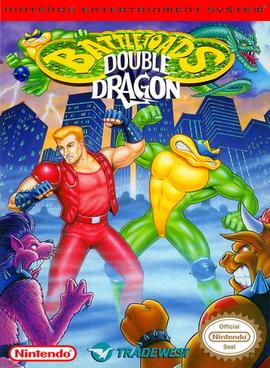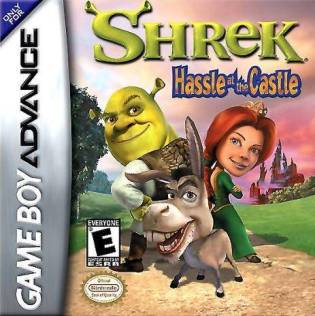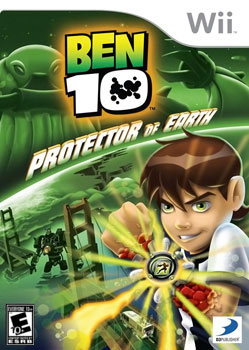
In video games, a boss is a significantly powerful non-player character created as an opponent to players. A fight with a boss character is commonly referred to as a boss battle or boss fight. Bosses are generally far stronger than other opponents the players have faced up to that point in a game. Boss battles are generally seen at climax points of particular sections of games, such as at the end of a level or stage or guarding a specific objective. A miniboss is a boss weaker or less significant than the main boss in the same area or level, though usually more powerful than the standard opponents and often fought alongside them. A superboss is generally much more powerful than the bosses encountered as part of the main game's plot and is often an optional encounter. A final boss is often the main antagonist of a game's story and the defeat of that character usually provides a positive conclusion to the game. A boss rush is a stage where players face multiple previous bosses again in succession.
An action game is a video game genre that emphasizes physical challenges, including hand–eye coordination and reaction time. The genre includes a large variety of sub-genres, such as fighting games, beat 'em ups, shooter games, rhythm games and platform games. Multiplayer online battle arena and some real-time strategy games are also considered action games.

Double Dragon is a beat 'em up video game series originally developed and published by Technōs Japan. It began with the release of the arcade game Double Dragon in 1987. The series features twin martial artists, Billy and Jimmy Lee, as they fight against various adversaries and rivals.

Double Dragon Advance is a 2003 side-scrolling beat-em-up released for the Game Boy Advance. It was published by Atlus and developed by Japanese studio Million. It is a remake of the 1987 arcade game Double Dragon and incorporates elements from its sequels and home versions.

Kung-Fu Master, known as Spartan X in Japan, is a side-scrolling beat 'em up developed by Irem as an arcade video game in 1984, and distributed by Data East in North America. Designed by Takashi Nishiyama, the game was based on Hong Kong martial arts films. It is a loose adaptation of the Jackie Chan, Sammo Hung, and Yuen Biao film Wheels on Meals (1984), called Spartan X in Japan, with the protagonist Thomas named after Jackie Chan's character in the film. The game is also heavily inspired by the Bruce Lee film Game of Death (1972), which was the basis for the game's concept. Nishiyama, who had previously designed the side-scrolling shooter Moon Patrol (1982), combined fighting elements with a shoot 'em up gameplay rhythm. Irem and Data East exported the game to the West without the Spartan X license.

Nekketsu Kōha Kunio-kun, released as Renegade in the West, is a beat 'em up video game developed by Technōs Japan and distributed by Taito for the arcades in 1986. In the original Japanese version Nekketsu Kōha Kunio-kun, the game revolves around a high-school delinquent named Kunio-kun who must stand up against a series of rival gangs frequently targeting his classmate Hiroshi. In the Western version Renegade, the player controls a street brawler who must face four different gangs in order to rescue his girlfriend being held captive by a mob boss.

Final Fight 3, released in Japan as Final Fight Tough, is a side-scrolling beat 'em up by Capcom originally released for the Super Nintendo Entertainment System in 1995. It is the second sequel to Final Fight released for the Super NES, following Final Fight 2, and like its predecessor, it was produced by Capcom's consumer division with no preceding arcade version released.

Battletoads/Double Dragon is a 1993 beat 'em up developed by Rare and published by Tradewest. It was originally released for the Nintendo Entertainment System and later ported to the Mega Drive/Genesis, Super NES, and Game Boy. Retro-bit Publishing has re-released the 8-bit NES version in early 2022 with plans to release the 16-bit versions later this year.

Double Dragon is a 1987 beat 'em up video game developed by Technōs Japan and distributed by Taito for arcades across Asia, North America and Europe. It is the first title in the Double Dragon franchise. The game's development was led by Yoshihisa Kishimoto, and it is a spiritual and technological successor to Technos' earlier beat 'em up, Nekketsu Kōha Kunio-kun (1986), released outside of Japan by Taito as Renegade; Kishimoto originally envisioned it as a direct sequel and part of the Kunio-kun series, before making it a new game with a different cast and setting.

Bruce Lee: Quest of the Dragon is a beat 'em up video game featuring martial artist Bruce Lee. It was developed by Ronin Entertainment and published by Universal Interactive, and was released in Europe and the United States for the Xbox in 2002 to a negative critical reception.
A beat 'em up is a video game genre featuring hand-to-hand combat against a large number of opponents. Traditional beat 'em ups take place in scrolling, two-dimensional (2D) levels, while a number of modern games feature more open three-dimensional (3D) environments with yet larger numbers of enemies. The gameplay tends to follow arcade genre conventions, such as being simple to learn but difficult to master, and the combat system tends to be more highly developed than other side-scrolling action games. Two-player cooperative gameplay and multiple player characters are also hallmarks of the genre. Most of these games take place in urban settings and feature crime-fighting and revenge-based plots, though some games may employ historical, science fiction or fantasy themes.

Batman Beyond: Return of the Joker, known as Batman of the Future: Return of the Joker in Europe, is a scrolling beat 'em up video game developed by Kemco and released by Ubi Soft for the Game Boy Color, PlayStation and Nintendo 64 in 2000 and 2001. The game is based on the film of the same name, which in turn was based on the TV series Batman Beyond. Players act as the new Batman Terry McGinnis, who takes over the position of the retired Bruce Wayne and fights against the Jokerz gang led by the recently revived Joker. Throughout the game, Batman fights the villain's cronies, who steal tech components from various laboratories and corporations in Gotham City. Joker uses them to take control of a missile-shooting satellite, which he plans to destroy the entire city with.
A side-scrolling video game is a game viewed from a side-view camera angle where the screen follows the player as they move left or right. The jump from single-screen or flip-screen graphics to scrolling graphics during the golden age of arcade games was a pivotal leap in game design, comparable to the move to 3D graphics during the fifth generation.

Teenage Mutant Ninja Turtles is a beat 'em up video game developed and published in 2003 by Konami, based on the 2003 TV series.

Night Slashers (ナイトスラッシャーズ) is a 1993 beat'em up arcade game developed and published by Data East. A remake is planned for major platforms licensed to Forever Entertainment.

Shrek: Hassle at the Castle is a 2D beat 'em up video game released in 2002 for the Game Boy Advance. It is based on the 2001 movie Shrek, and features characters from it. It is the only game in the franchise that follows the plot of the first movie. A sequel, Shrek: Reekin' Havoc, was released in 2003.

Ben 10: Protector of Earth is an action-adventure video game developed by High Voltage Software and published by D3 Publisher and is based on the animated television series Ben 10. This is the second Ben 10 game following the HyperScan game, is the first official game in the franchise, and it was released for the PlayStation 2, PlayStation Portable, the Nintendo DS and the Nintendo Wii in late 2007.

Mighty Flip Champs! is a puzzle-platform game, developed and published by WayForward Technologies for the Nintendo DSi's DSiWare digital download service. It was released on June 1, 2009, in North America and on November 27 in the PAL regions. The developers took inspiration from multiple sources, including the video games Wendy: Every Witch Way and The Legend of Zelda: A Link to the Past. In it, players control Alta, a girl who has to reach a fishman by flipping between areas until she can reach him. Since its release, Mighty Flip Champs! received all-around positive reception, while also being called one of the best video games for the DSiWare service. It is the first game in the Mighty series, and is followed by Mighty Milky Way, Mighty Switch Force! and Mighty Switch Force! 2.

Monster Force is an action video game developed by Digital Eclipse and published by Vivendi Universal Games exclusively for Game Boy Advance. A planned PlayStation version of the game was to be released in 2001 by Konami, as well as a Game Boy Color version, but these never achieved fruition.

Crash of the Titans is a 2007 platform video game developed by Amaze Entertainment and published by Vivendi Games for the Nintendo DS. It is an installment in the Crash Bandicoot series and an alternate version of the console-based title of the same name developed by Radical Entertainment.

















